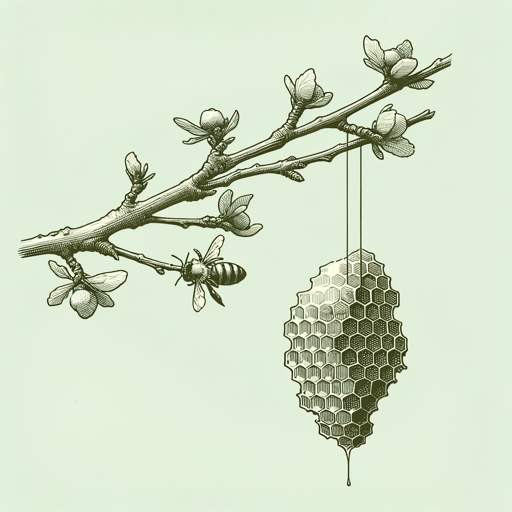51 pages • 1 hour read
Lauren GroffThe Vaster Wilds
Fiction | Novel | Adult | Published in 2023A modern alternative to SparkNotes and CliffsNotes, SuperSummary offers high-quality Study Guides with detailed chapter summaries and analysis of major themes, characters, and more.
Summary and Study Guide
Overview
The Vaster Wilds is a historical survival-adventure novel by Lauren Groff, published in 2023. Set in approximately 1610, it follows the flight of a teenage serving girl from the colony of Jamestown during a deadly winter of starvation and disease. As she attempts to reach the northern settlements of the French, she faces multiple obstacles in the form of natural hazards, illnesses, and other humans. Her solo journey is punctuated by periods of contemplation, dreams, and visions, in which she develops her own philosophical worldview and modifies her understanding of both the imperial society she comes from and the colonialist communities from which she is fleeing.
This guide refers to the Penguin Random House 2023 edition.
Content Warning: The source material and this guide contain descriptions of sexual abuse and rape, misogynistic violence, and extreme classism. Instances of suicidal ideation, attempted suicide, and the death of children are also described. The source material also discusses developmental disabilities using the period-typical and disparaging language that was common in the 1600s. The novel discusses the violent nature of colonialism and imperialism, as well as the personal and environmental tragedies that settler colonialism has caused. Racist, colonial attitudes toward Indigenous people are expressed within the narrative, as is the human cost of colonialism for the Indigenous population.
Plot Summary
A teenage servant girl escapes from the (unnamed) Jamestown settlement in the middle of a late winter night. Her desperate journey is spurred by the dire conditions within the fort, for the colonists are dying rapidly from disease, starvation, and infighting. The situation is such that the girl believes her best chance at survival is to attempt to make it to the French settlements in what is now known as Quebec. Though determined, intelligent, and pragmatic, the girl’s plan is hindered by her distinctly colonial understanding of the land and her utter lack of knowledge about her environment.
Although she experiences a multitude of injuries and other deprivations, she manages to push forward on the strength of her own perseverance, her faith in God, and her delight in nature. On this journey, each meal is a struggle, and the discovery of sustenance is a sporadic achievement at best; her already starving body repeatedly nears total exhaustion before she manages to steal honey from an active hive, or dig a fish out of a frozen river, or find grubs in a dead tree. None of the basic elements of survival are guaranteed, and a thunderstorm can mean instant death. She also struggles with her fear of the unknown. Plagued by night terrors of monsters and death, she must balance her need to survive with her fear of the wild, and her encounters with bears and wolves keep her cautious as she relies on her senses and instincts. This fear of the unknown also keeps her from seeking help from Indigenous villages. Influenced by the stories of the other colonists and her own experiences of human violence, she resolutely avoids all contact with others.
During her journey, the girl frequently experiences visions and dreams induced by hunger, illness, and loneliness, and she often remembers moments from her past. Through these remembrances, the narrative relates her life story, from her early years in the poorhouse in England to her entrance into her mistress’s house. Her recollections reveal that throughout the household’s transition to the Jamestown colony and the subsequent deprivations that took place there, she was constantly dehumanized and treated like a pet, and key moments are highlighted in flashback passages. She recalls the sexual abuse that she suffered at the hands of the mistress’s son from her first marriage. She was also locked in a room with the mistress’s first husband as he died of the plague. These recollections of trauma are interspersed with more comforting memories, such as the Dutch glassblower and sailor with whom she shared a brief relationship on the boat journey from England. However, he was swept overboard in a storm, and the girl now imagines him accompanying her as a companion on her journey. He and an imaginary French savior make frequent appearances in the girl’s daydreams as she imagines a life of colonial success, companionship, and wealth. These visions fade as she becomes more and more aware of the world around her.
When the girl’s body finally does fail her, it is not because of anything she has encountered in the wilderness; instead, she succumbs to a disease that the colonists carried with them from England: smallpox. Her strength is used up, and in the height of her fever, she loses the faith in God that has been sustaining her. She feels abandoned, for she has repeatedly asked for deliverance and has been denied. Approaching death, she envisions an alternate version of her life in which she heals and lives alone in the woods for many years. Thinking through this, however, she realizes that such a life would not be a good option, for a truly fulfilling life requires both an appreciation of the beauty in nature and the comfort of human companionship. Accepting her death, she feels a new connection to all growing in the empty place inside her where she once felt the presence of God. After she dies, an oak tree grows through her ribcage.
Related Titles
By Lauren Groff





